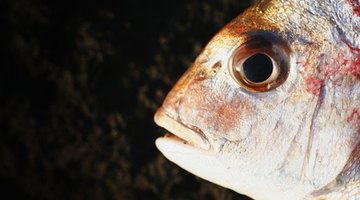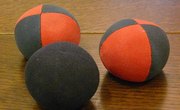Teaching adaptation in middle school is a required educational standard for most states. The concept of adaptation is best taught using a combination of direct instruction as well as a hands-on approach. Some adaptation activities that employ these teaching methods are the adaptation match game, the fish head activity, and a Smithsonian Environmental Research Center video conference.
Adaptation Matching
This jigsaw activity gets the entire class involved. Using library books, each student researches a particular animal and its adaptation. The students must glue a labeled picture of the animal on an index card and write down information about the animal's special adaptation on another card. Once done, the students present their cards to the teacher. The teacher then tapes the animal cards to the board and reads the adaptation cards one by one, with students guessing which animal has which adaptation. The beauty of this activity is that it not only allows for students to conduct their own research, but they are introduced to an engaging game. It can also be used as a filler when a lesson ends sooner than expected.
Fish Heads
This activity works best with several dried fish heads, which can be purchased through a teaching supply company. Alternatively, some teachers create handouts with photos of the heads of several fish with different-looking mouths.
The teacher starts the lesson by relating pet breeds to adaptation. The students pass around the fish heads (or handout) before breaking into discussion groups. Each group develops a theory about why their fish's head looks the way it does. After recording the reasoning, a student from each group presents her group's theory to the class. The novelty of touching dried fish heads grabs the attention of students who are kinesthetic learners, making the lesson all the more exciting.
Smithsonian Video Conference
The Smithsonian Environmental Research Center holds video conferences for schools that introduce students to the concept of a large scientific community. Their conference, "Birds of a Feather," focuses on adaptation for students from Kindergarten through 7th Grade and can be designed specific to the class. The prices for video conferences start at $150 but may be higher for special requests, such as the use of live birds. According to the Smithsonian's website, in the "Birds of a Feather" conference, students "examine the structure of several types of feathers and identify the differences. This will help students recognize how to look for adaptations and determine why they are important."
Related Articles
References
Writer Bio
Julia Klaus has been a writer and copy editor for three years. She has edited books including "Top Dollar Plumber" by Sid Southerland and is contributer to eHow. Klaus has experience writing web copy and training manuals and has a Bachelor of Arts in English as well as a Master of Arts in teaching from the University of Portland.











